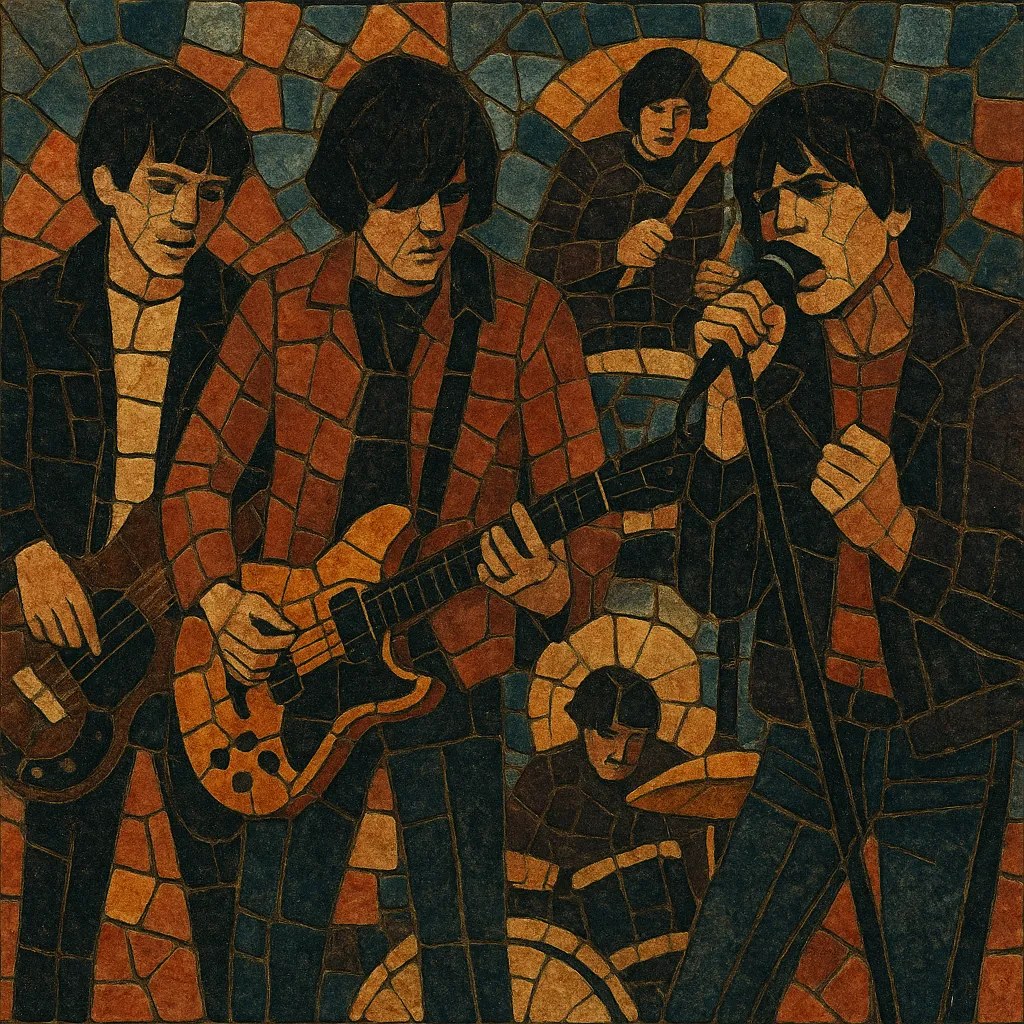
Garage rock revival is a turn-of-the-millennium resurgence of raw, guitar‑driven rock that consciously channels the immediacy of 1960s garage bands and the urgency of 1970s punk. It favors short songs, distorted riffs, catchy hooks, and a back‑to‑basics band setup over studio gloss and elaborate arrangements.
Hallmarks include crunchy overdriven guitars, tight and energetic drum patterns, simple but punchy bass lines, and vocals with a swaggering or detached cool. Production often leans lo‑fi or analog‑inspired, emphasizing room sound and performance over perfection. Lyrically, it tends to focus on youthful nightlife, romance, boredom, style, and urban ennui.
Scenes in New York City and Detroit were pivotal for the mainstream breakthrough, with parallel explosions in the UK, Sweden, and Australia. The movement revitalized interest in guitar rock across indie and mainstream audiences.
The garage rock revival draws its aesthetics and ethos from 1960s garage rock—regional, DIY groups that prized immediacy and grit—and from 1970s proto‑punk and punk rock, which sharpened that rawness into a rebellious minimalism. Occasional 1980s and 1990s garage/lo‑fi revivals (e.g., The Gories, The Oblivians, The Hellacopters) helped keep the flame alive and provided a template for later bands.
In the late 1990s, Detroit and New York City incubated a new wave of bands favoring stripped‑down songwriting, vintage guitar tones, and no‑frills production. Independently released singles and EPs, word‑of‑mouth, and early web/MP3 blog culture built anticipation before the mainstream took notice.
The movement burst into global consciousness with The Strokes’ “Is This It” (2001) and The White Stripes’ “White Blood Cells” (2001) and “Elephant” (2003). Simultaneously, The Hives (Sweden), The Vines (Australia), and The Libertines (UK) brought the sound to international charts. Media hype, fashion-forward imagery, and a sense of “rock’s return” made the revival a defining early‑2000s trend.
As the wave spread, acts from the US, UK, Scandinavia, and Oceania scored festival slots and radio play. Labels like Rough Trade, XL, and V2 backed the sound, while magazines and TV network countdowns amplified it. By the mid‑2000s, the revival’s aesthetics bled into broader indie rock, influencing production choices and guitar‑centric songwriting across scenes.
While the initial mainstream surge cooled, its DNA persisted: newer artists folded garage grit into post‑punk revival, psych‑garage, and lo‑fi indie. Bands like The Black Keys graduated to arena‑scale blues‑garage hybrids, while underground circuits nurtured prolific garage auteurs and DIY scenes. The revival ultimately re‑legitimized lean, riff‑centric rock for a generation.
Use a lean lineup: two electric guitars (or a single‑guitar setup), electric bass, drums, and vocals. Favor simple pedal chains—overdrive/fuzz, a spring‑style reverb, maybe a tremolo. Choose bright, cutting tones; think garagey crunch rather than high‑gain saturation.
Keep tempos brisk (typically 120–160 BPM). Drums should hit hard with driving eighth‑notes on hi‑hat, punchy snare backbeats, and occasional tom fills. Aim for a dancing, head‑nodding momentum—tight, steady, and slightly ahead of the beat.
Write around bold, memorable guitar riffs and two‑to‑four chord vamps (I–IV–V, I–bVII–IV, or minor pentatonic riffs). Keep harmony functional and uncluttered; let rhythmic attack and timbre do the heavy lifting. Short turnarounds and stop‑start figures add excitement.
Craft hooky, concise vocal lines with attitude—cool detachment, sly swagger, or urgent shouts. Use call‑and‑response between vocal and guitar, and layer simple harmonies or unison shouts on choruses for impact.
Aim for 2–3 minute songs with tight verse–chorus forms, a brief middle‑eight or a riff‑centric break, and minimal intros. Emphasize dynamics through dropping instruments (e.g., drums out for a bar) rather than complex layering.
Track live when possible, embracing slight imperfections. Use room mics and minimal editing to preserve energy. Avoid excessive compression or wide multi‑tracking; prioritize punch and presence. Analog saturation or tape emulation can help achieve the desired grit.
Write about nightlife, fleeting relationships, city living, and youthful restlessness. Keep lines economical and image‑driven. Delivery should feel confident and immediate—more about feel than virtuosity.

